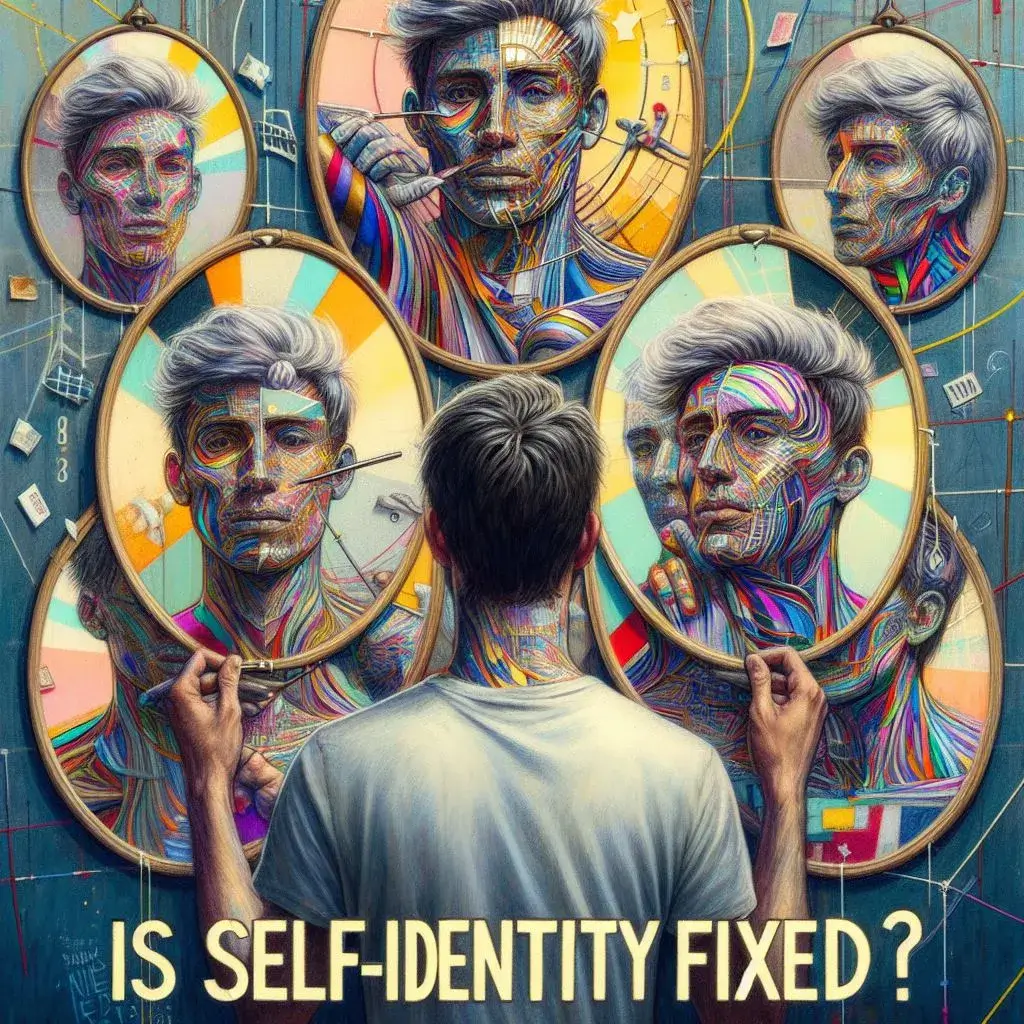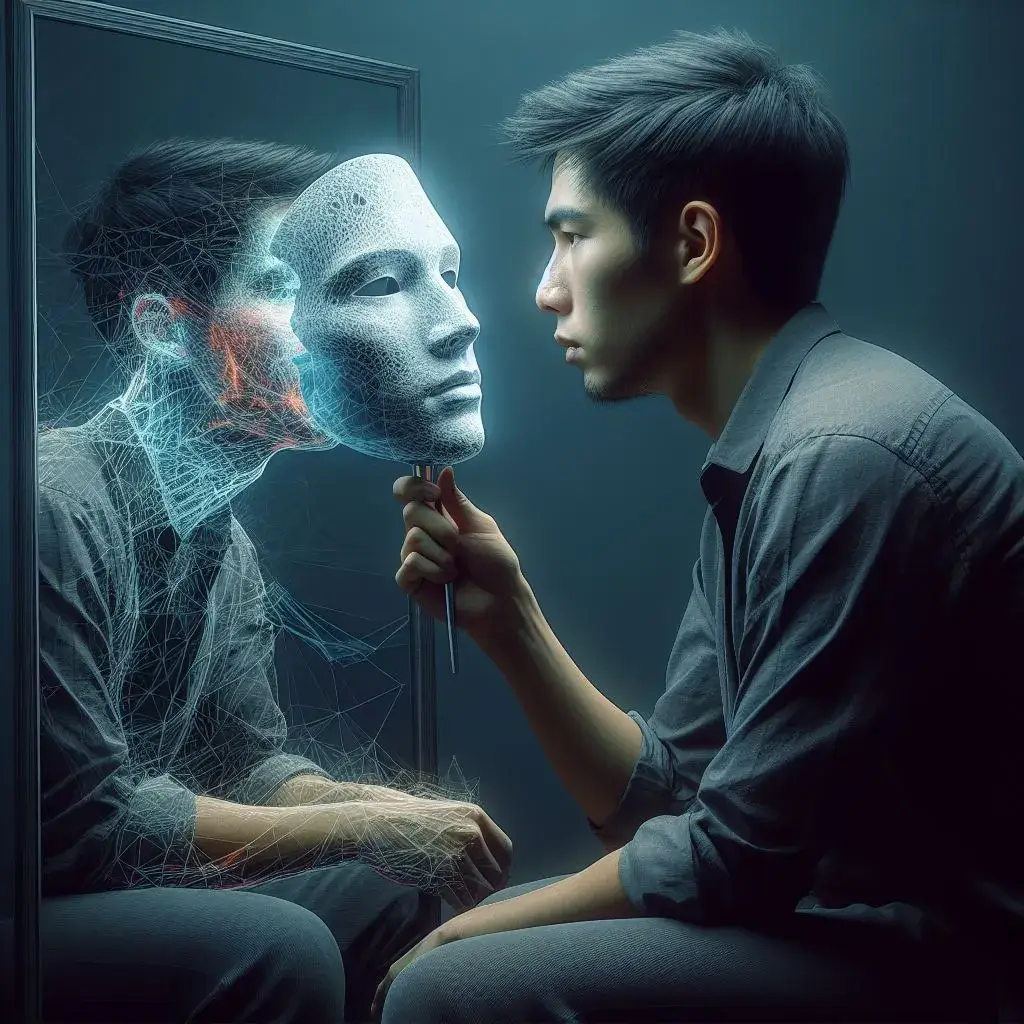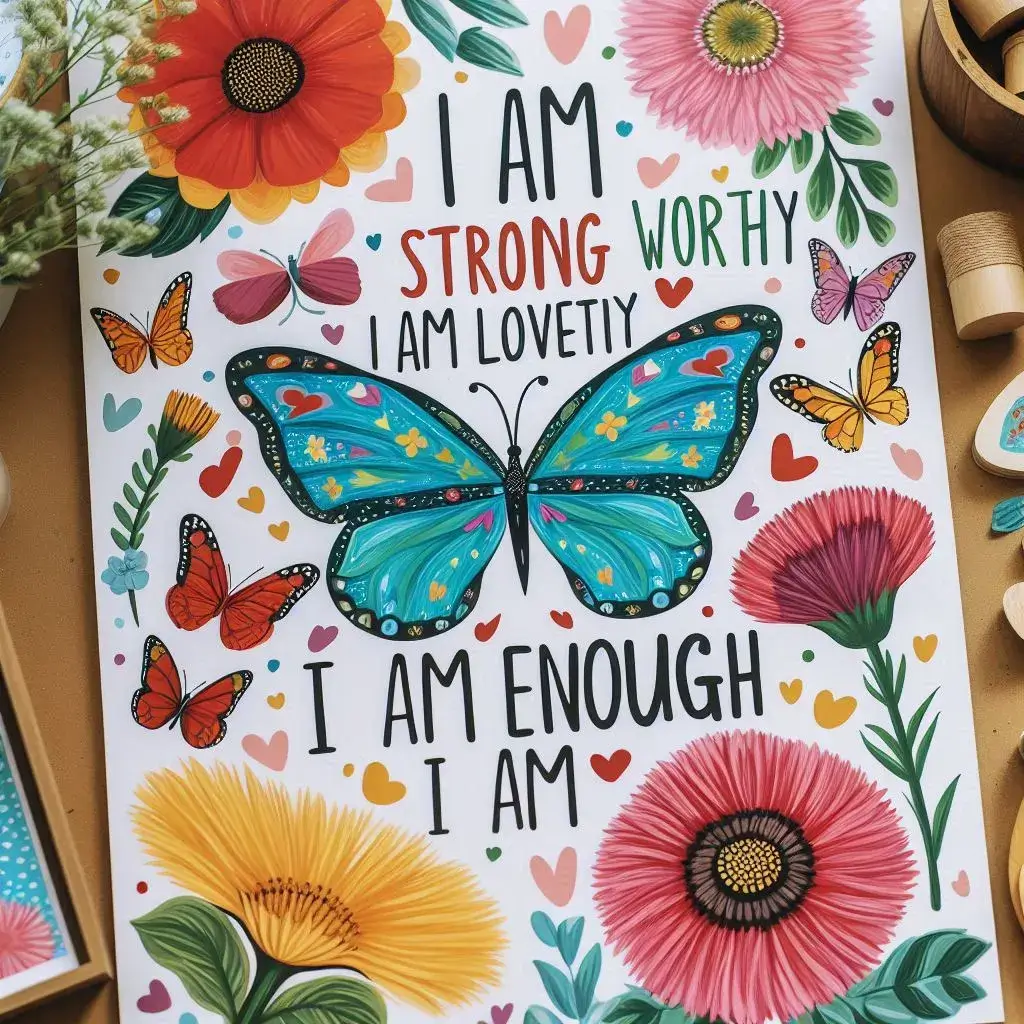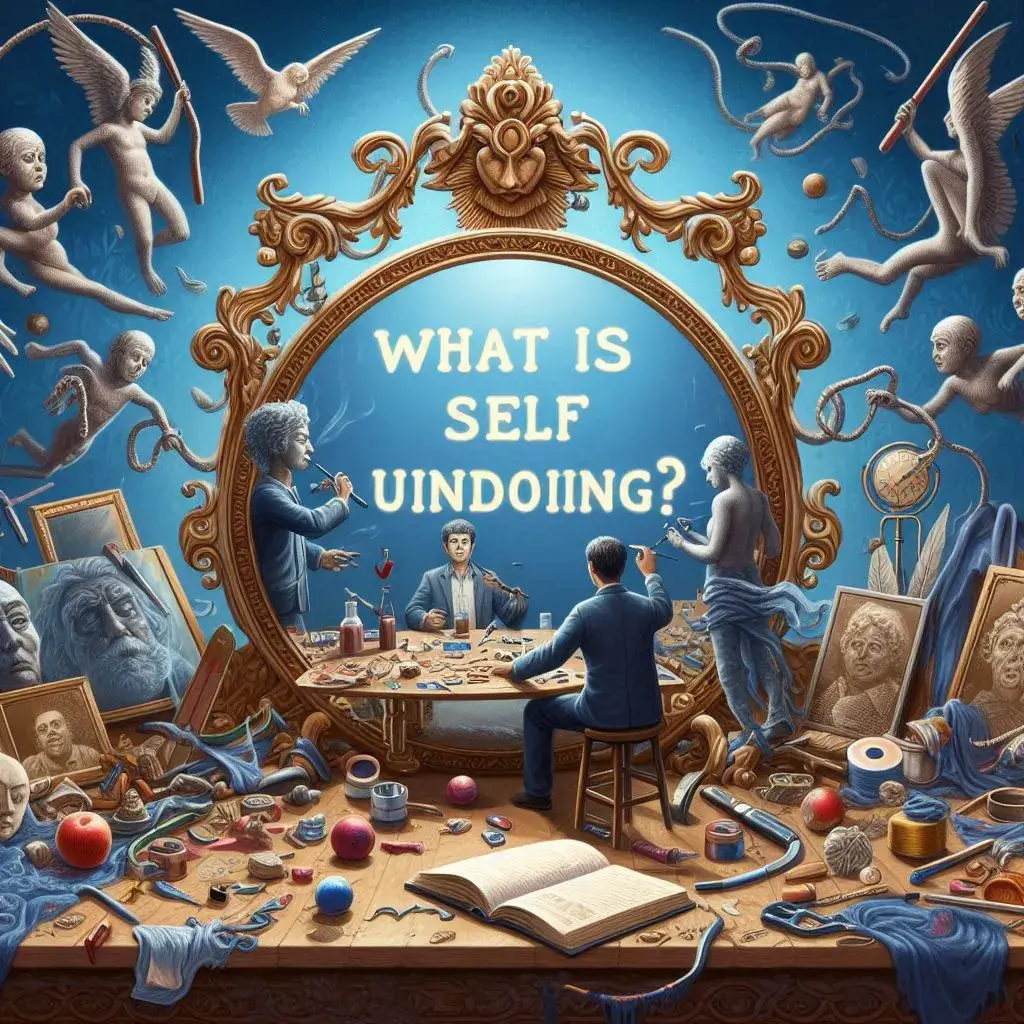Ever felt like you’re stuck and can’t change, no matter how hard you try? If you said yes, you might be dealing with a fixed identity – a feeling that holds you back and stops you from growing. But don’t worry!
In this article, we’ll explore what it means to have a fixed identity, how it can impact your life, answering some important questions and practical strategies for overcoming limiting beliefs. By the end, you’ll have a better understanding of how to cultivate a growth mindset and embrace the possibility of change. Let’s jump right in!
What Exactly Means of Fixed Identity?
A fixed identity refers to a person’s self-concept that remains consistent and unchanging over time. It is the idea that a person’s identity is based on certain stable and enduring characteristics, such as personality traits, values, and beliefs. This sense of self is often deeply ingrained and can be resistant to change, even in the face of new experiences or information.
Best Example Of Fixed Identity
Consider a 20-year old woman who sees herself strictly as a “student”. She believes her main priority in life is to focus only on her studies and get good grades. However, as she goes through different life experiences like having her first job, relationship or moving to a new city, her priorities and interests start changing gradually. Though “student” was a big part of her identity few years ago, it no longer defines her completely.
Let me share a story of my friend John who struggled with the idea of having a fixed identity. John grew up in a conservative small town. From a young age, he was told by his family and community that as a man, his role and purpose in life is to have a good career, get married and have kids.
Even though deep inside he was curious about other possibilities, he didn’t question this “fixed” script as he didn’t want to disappoint the people around him. After graduating college, John got his first job but felt unfulfilled. A colleague then introduced him to volunteering opportunities working with underprivileged children. John discovered his hidden passion for social work and is now pursuing a career change. Even though it was difficult for John to accept initially, he realized over time that who he is and his dreams can evolve as he goes through new experiences (McAdams, 2008).
Remember This Was not Really Happen To Me Its Just For An Example!
Fixed Identity According To Psychology
According to psychology, a fixed identity can provide a sense of security and help people feel more confident and in control of their lives. However, it can also be a source of stress and anxiety if a person feels like they are not living up to their own expectations or if their identity is threatened in some way.
This Concept of Fixed Identity is research by psychologist that is Jennifer Crocker, a professor at Ohio State University. In her work, Crocker defines fixed identity as “a stable and enduring self-concept that based on certain central and defining characteristics” (Crocker & Luhtanen, 2003, p. 592).
Crocker and her colleagues have found that people with a more fixed sense of self tend to be more sensitive to threats to their self-esteem and are more likely to engage in defensive behaviors in order to protect their self-concept. For example, they may avoid situations that challenge their self-image or try to downplay failures or negative feedback.
Crocker also suggests that a fixed identity can be limiting and prevent people from being open to new experiences and perspectives. In one study, she and her colleagues found that people with a more fixed sense of self were less likely to engage in behaviors that were inconsistent with their self-concept, even if these behaviors might have been beneficial for them (Crocker & Luhtanen, 2003).
But I think that is worng, the person who have the concept of fixed identity they need to change, when he/she change the concept it moves to the growth, fixed means fixed! here you can check growth mindset vs fixed mindset in details.
Which part of your identity is our fixed?
Person has two type of self inner and outer as a person have different aspects of a identity may be more or less fixed. Some aspects of a person’s identity may be relatively stable and enduring, while others may be more flexible and open to change.
For example, a person’s core values and beliefs may be more fixed and enduring, as they are often deeply ingrained and central to a person’s sense of self. On the other hand, a person’s interests, hobbies, and goals may be more flexible and subject to change over time.
Similarly, some aspects of a person’s identity may be more fixed in certain contexts or at certain times in their life, while others may be more open to change. For example, a person’s professional identity may be more fixed while they are working, but may be more open to change when they are considering a career change or transitioning to retirement.
In general, it is common for people to have some aspects of their identity that are more fixed and others that are more flexible. Finding a balance between having a strong and consistent sense of self, and being open to change and growth, is important for overall well-being.
Is Self Identity Fixed?

Erikson’s (1968) theory of psychosocial development is a stage theory that suggests that a person’s identity develops and evolves over the course of their lifetime. Erikson proposed that a person’s identity is shaped by their experiences and the choices they make, and that it continues to develop into adulthood.
According to Erikson, a person’s identity is formed through a series of stages, each of which presents a unique set of challenges that must be resolved in order for a person to develop a healthy and stable sense of self.
Grotevant and Cooper (1986) studied patterns of intergenerational continuity and discontinuity in families and found that a person’s identity can change over time, particularly in response to major life events and transitions.
They suggested that a person’s identity is not fixed, but rather is shaped by their experiences and the context in which they live. According to Grotevant and Cooper, major life events, such as getting married, having children, or changing careers, can lead to changes in a person’s identity as they adapt to new roles and responsibilities.
Josselson (2013) argues that the self is a constantly evolving construct that is shaped by a person’s experiences, relationships, and cultural context. She suggests that the self is not fixed, but rather is in a constant state of flux and change. Josselson argues that the self is not a static entity, but rather a dynamic and fluid construct that is continually being shaped and reshaped by a person’s experiences and interactions with others.
She suggests that a person’s identity is not a fixed and unchanging aspect of their self, but rather a fluid and evolving construct that is shaped by their experiences and the context in which they live.
In Conclusion , My point of view is that a person’s identity can change over time, while a person’s mindset remains fixed and does not change, whether they want to change it or not. A person’s identity is shaped by their experiences and the context in which they live, while mindset can also change, but when they don’t accept that they have a fixed mindset.
Sometimes, in certain places, a fixed mindset can also cause problems for the growth of identity. Wait, wait, I know your thoughts are throwing many questions. I’ll address them momentarily. Your identity is the combination of your beliefs. Where do beliefs come from? From your mind? Yes or no? The answer is yes, and also no, because some beliefs are innate from birth, while others are formed through life experiences.
For example, If you are Muslim, your initial belief is that there is one God. But if you are Christian, your belief differs. These beliefs are ingrained from birth. On the other hand, you attend university where you have a very positive experience. Now, you develop a belief that the university is the best and you recommend it to your loved ones. So, when your beliefs from birth change, such as transitioning from being Muslim to being inspired by Christianity, you may change your religion. First, your mindset changes, and then your identity also changes. Therefore, if you are stuck in one religion with a fixed mindset, your identity remains fixed as well.
How to Change Fixed Identity?
Changing a fixed identity can be a challenging process, as it often involves confronting deeply ingrained beliefs and values that have been a central part of a person’s sense of self. However, it is possible to make changes to a fixed identity with effort and commitment. Here are some steps:
Reflect on your current identity: Take some time to reflect on the aspects of your identity that feel fixed and unchanging. Consider how these aspects of your identity have developed and what experiences or beliefs have contributed to their formation.
Identify areas for growth: Once you have a clear understanding of your current identity, consider what areas you would like to change or grow. This may involve identifying new interests, values, or goals that you would like to pursue.
Seek out new experiences: One of the best ways to challenge a fixed identity is to seek out new experiences that challenge your beliefs and assumptions. This may involve trying new activities, meeting new people, or traveling to new places.
Practice self-compassion: Changing a fixed identity can be a difficult and emotional process. It is important to practice self-compassion and be kind to yourself as you work towards making changes.
Seek support from others: Making changes to a fixed identity can be challenging, and it can be helpful to seek support from others. This may involve talking to a trusted friend, family member.




Ahaa, its fastidious discussion about this piece of writing here at this weblog, I have read all that, so at this time me also commenting here.
Thank you for your comment! I’m glad to hear you’ve enjoyed the discussion. Feel free to share your insights or ask any questions—I’d love to hear your thoughts on the topic!